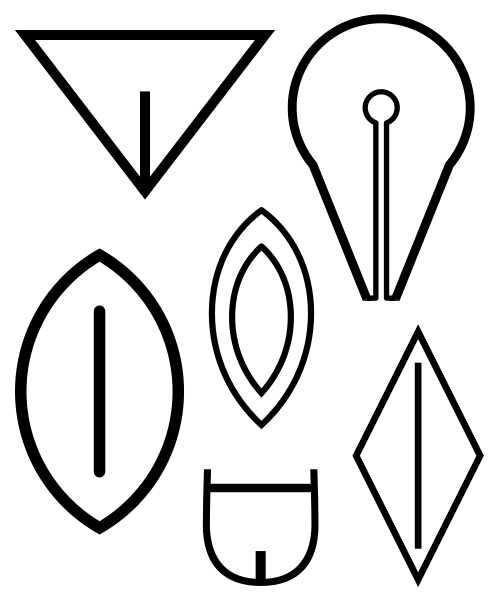File:Vulva symbols.svg

Size of this PNG preview of this SVG file: 500 × 600 pixels. Other resolutions: 200 × 240 pixels | 400 × 480 pixels | 640 × 768 pixels | 853 × 1,024 pixels | 1,707 × 2,048 pixels.
Original file (SVG file, nominally 500 × 600 pixels, file size: 3 KB)
File history
Click on a date/time to view the file as it appeared at that time.
| Date/Time | Thumbnail | Dimensions | User | Comment | |
|---|---|---|---|---|---|
| current | 03:20, 24 September 2022 |  | 500 × 600 (3 KB) | Smasongarrison | slimmed down with svgomg // Editing SVG source code using c:User:Rillke/SVGedit.js |
| 05:51, 5 April 2017 |  | 500 × 600 (4 KB) | AnonMoos | Reverted to version as of 11:32, 2 September 2008 (UTC) | |
| 20:38, 15 January 2017 |  | 938 × 1,125 (108 KB) | JMCC1 | error in egyptian symbol | |
| 11:32, 2 September 2008 |  | 500 × 600 (4 KB) | AnonMoos | tweaking most-recently added symbol for exact symmetry | |
| 22:55, 30 September 2007 |  | 500 × 600 (4 KB) | AnonMoos | adding further symbol | |
| 07:13, 4 September 2007 |  | 500 × 600 (3 KB) | AnonMoos | adding symbol | |
| 20:48, 26 August 2007 |  | 500 × 600 (2 KB) | AnonMoos | Four symbolic representations of external female genitals as they have been used in various historical/cultural contexts: 1) Upper left: A schematized drawing of the pubic triangle; among other things, this is the earliest archaic form of the ancient Sum |
File usage
The following page uses this file:
Global file usage
The following other wikis use this file:
- Usage on als.wikipedia.org
- Usage on ca.wikipedia.org
- Usage on cs.wikipedia.org
- Usage on de.wikipedia.org
- Usage on en.wikipedia.org
- Usage on es.wikipedia.org
- Usage on fr.wikipedia.org
- Usage on ja.wikipedia.org
- Usage on pl.wikipedia.org
- Usage on ru.wikipedia.org
- Usage on sv.wikipedia.org
- Usage on uk.wikipedia.org
- Usage on uz.wikipedia.org
- Usage on www.wikidata.org
- Usage on zh.wikipedia.org